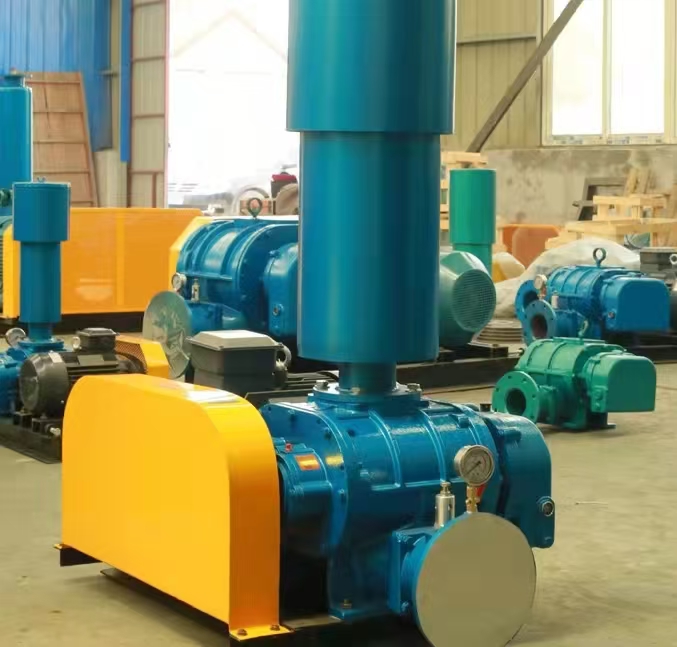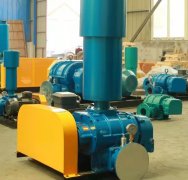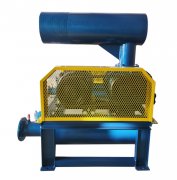Detailed explanation of Roots blower structure
As a type of positive displacement fan, the unique structural design of Roots blower determines its excellent working performance. A deep understanding of the structure and composition of the equipment can help users better use and maintain the equipment, and fully utilize its efficiency.
Core operating components
The "heart" of a Roots blower is a pair of precision matched rotors. These two rotors are usually designed in a two leaf or three leaf shape, and are kept in synchronous reverse rotation through high-precision gears. The rotor is made of high-strength materials and undergoes precision machining and dynamic balance correction to ensure smooth operation. There is an extremely precise gap between the rotor and the casing, which ensures sealing and avoids metal contact.
Synchronous gears are key components that ensure rotor synchronization. The gears are made of high-quality alloy steel and undergo carburizing and quenching treatment, resulting in high tooth surface hardness and good wear resistance. The machining accuracy of gears directly affects the smoothness and noise level of equipment operation. Good lubrication is crucial for the service life of gears, and it is necessary to regularly check the meshing and wear status of the gears.
Shell and sealing system
The casing is the main pressure bearing component of the equipment, usually made of high-strength cast iron. The interior of the casing is precision machined to form smooth gas flow channels. The wall panel cooperates with the casing to form a closed working chamber. The design of the casing needs to consider strength and stiffness to ensure that it does not deform under working pressure.
The sealing system prevents gas leakage and lubricating oil leakage. Shaft seals usually use mechanical seals or labyrinth seals, and different sealing forms are selected according to the characteristics of the medium. The wall panel seal ensures the sealing between the casing and the end cover. The selection of sealing components needs to consider factors such as medium temperature, pressure, and corrosiveness.
Bearing and lubrication system
The bearing system supports the operation of the rotor and bears radial and axial loads. Depending on the equipment specifications, rolling bearings or sliding bearings may be selected. The selection of bearings needs to consider factors such as load capacity, speed requirements, and usage environment. The lubrication and cooling of bearings directly affect their service life.
The lubrication system ensures good lubrication of the operating components. Including components such as fuel tank, oil pump, oil cooler, and oil filter. Lubricating oil needs to be replaced regularly to maintain cleanliness and appropriate oil level. The oil cooler ensures that the temperature of the lubricating oil is within the allowable range. The impurities in the lubricating oil of the oil filter protect the operating components.
Auxiliary system components
Import and export mufflers reduce equipment operating noise. Imported silencers usually use the principle of resistive noise reduction, while outlet silencers often use resistant noise reduction structures. The design of a muffler needs to balance the noise reduction effect and pressure loss. The valve automatically opens to release pressure when the system is overpressure, protecting the equipment.
The base and connectors ensure stable installation of the equipment. The base is usually made of steel or cast iron, with sufficient strength and rigidity. The coupling or belt drive device transmits power to the fan. These auxiliary components, although not directly involved in the working process, have a significant impact on the overall performance of the equipment.
Control System and Instrumentation
Modern Roots blowers are usually equipped with a comprehensive control system. The pressure gauge displays the working pressure of the system, making it easy to monitor the operating status of the equipment. The thermometer monitors the temperature of bearings and lubricating oil. Vibration sensors detect the vibration status of equipment. These instruments provide important parameter information for equipment operation.
The control system can achieve automatic start stop and protection of equipment. The overload protection device automatically shuts down when the equipment is overloaded. The temperature protection device emits an alarm when the temperature is too high. These protective functions ensure the operation of the device.
Key points of maintenance and upkeep
Understanding the structure of the equipment is helpful for better maintenance and upkeep. Regularly check the rotor clearance to ensure it is within the allowable range. Check the meshing condition of the gears and adjust or replace them in a timely manner. Maintain the lubrication system in good working condition and regularly replace the lubricating oil.
Check the sealing device to prevent medium leakage. Clean the cooling system to ensure effective heat dissipation. Check the fasteners to prevent loosening. Regular maintenance can extend the service life of equipment and improve operational reliability.
In summary, the structural design of Roots blower embodies the combination of functionality and reliability. Understanding the functions and maintenance requirements of each component can help users better use the equipment and ensure long-term stable operation. With the advancement of technology, the structural design of Roots blowers is constantly being optimized to provide users with a better user experience.



